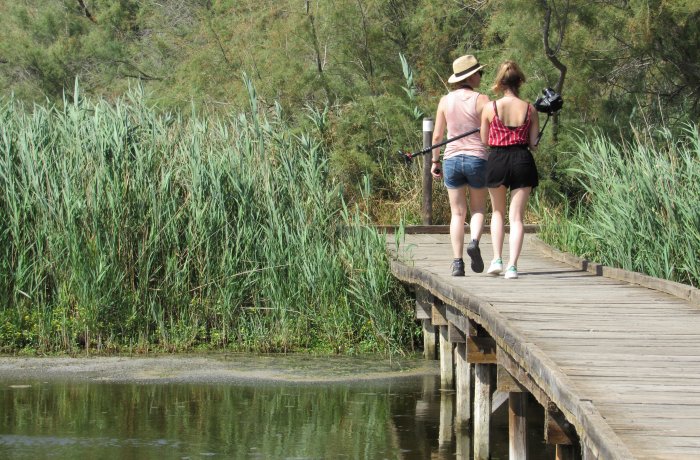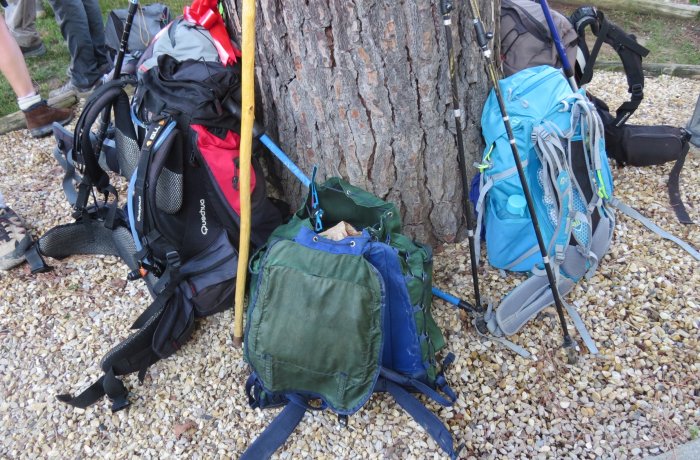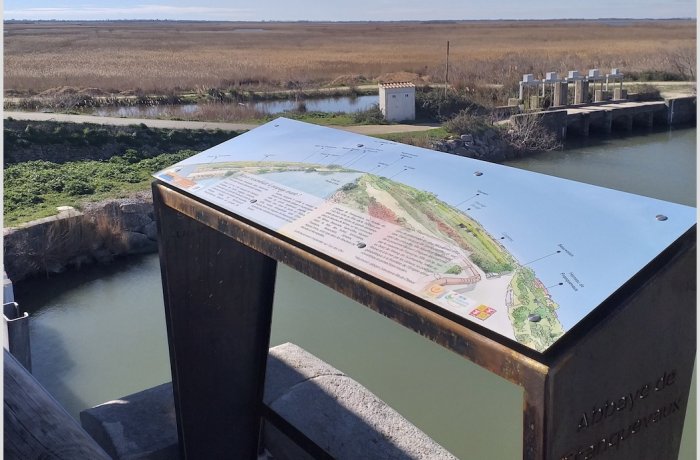Walk to the rhythm of nature!
Experienced hikers or curious families looking for an adventure — we offer different ways to explore the vast Camargue landscapes and the Costières hills.
From marked hiking trails to nature or heritage interpretation paths, we provide a whole range of discoveries in the green and blue tones of our territory.
Green for the vineyards and orchards that line your route on the Costières side, and blue for the ponds, canals, and bright skies that will light up your walk on the Camargue side.
Let's not forget black and white — the Camargue bulls and horses you'll encounter along your journey!
Discover and download the “Rando Gard” app to find walking routes throughout the department!
Let us guide you!

Hiking Trails
Explore our area through a network of over 120 km of marked trails accessible by foot, horseback, or bike. You can either follow one of the suggested routes or create your own custom path. These trails are part of the departmental network and meet the quality standards of the "Gard Pleine Nature" label.
Find all these trails in our map guide "From Costières to the Camargue Ponds."
Long and Short-Distance Hiking Trails (GR and PR)
- GR®653, the Arles Way or Via Tolosana, the southernmost route of the Camino de Santiago.
Connecting the Mediterranean and Atlantic slopes, the Arles Way, also known as Via Tolosana, links Arles to Puente-la-Reina in Spain, where it joins the Camino Francès in just under 1,000 kilometers.
The Gard portion of the GR takes you from Saint-Gilles to Villetelle, via Gallargues, toward Montpellier.
Arriving from Saint-Gilles to Vauvert, you’ll cross part of the Costières with numerous orchards, walk alongside irrigation canals, and enjoy stunning views of the Camargue ponds.
Let yourself be audio-guided with the Rando Gard App.
- GR®42, "From the Pilat Mountains to the Mediterranean," from Saint-Etienne to Grau-du-Roi.
Coming from Saint-Gilles to the Franquevaux Bridge, follow the Rhône-to-Sète Canal to La Laune. From Gallician, take the ViaRhôna.
From La Laune to Mas du Bourry, you’ll pass through the lower Costières vineyards, cross the D104 to the right, then reach the Pont de la Clapière. You’re back in the Camargue, in the beautiful meadows of Le Cailar where Camargue bulls graze.
Follow the markings to Chaberton Bridge and continue toward Aigues-Mortes.
- PR®52 “From One Canal to Another” Distance: 11 km / 3h00
This PR trail starts at the Gallician Marina. It is suitable for families and easy to walk. You will pass from the Rhône-to-Sète Canal to the Philippe Lamour Canal, ending on a section of the "Vauvert-Gallician" greenway.
Discover the loop "From One Canal to Another" on the Rando Gard website.
Tourism Office’s Favorite
We suggest a short walk starting at the Tourist Office, where you can follow a part of the Camino de Santiago. All details are available in the map guide "From Costières to the Camargue Ponds." Approx. 7 km
Discover the loop "Walk on the Camino de Santiago" on the RandoGard website or app.
From the Tourist Office, follow the yellow markings to Place Gambetta. Pick up the red and white markings of GR653 and head toward "Le Cournier."
Continue straight to the “Vieux Chêne” intersection and turn right. Follow the markings to “Laquet de Fenestralle” (a small ruined house), then return to Vauvert following the yellow trail.
Interpretive Trails
1/ Nature
- La Fromagère Distance: 4 km / 1h30 to 2h00
La Fromagère is one of the two trails of the Scamandre Discovery Center, free to access but subject to the center’s opening hours.
This trail allows you to enter the Regional Nature Reserve, where you can observe various iconic Camargue birds. Multiple observation points are available along the way.
- Le Butor Distance: 1 km
Le Butor is the second trail of the Scamandre Discovery Center. Entirely on stilts, it immerses you in the heart of the reserve. Stop first on the observation platform and end at the viewing hide.
- La Marette Distance: 1.6 km
Starting from the Grand Site of France Visitor Center, this trail can be done independently or with a guide. It immerses you in Camargue landscapes and leads through the typical ecosystems of the Gard Camargue, introducing you to local flora, fauna, and heritage.
- The Sylvéréal Trails (accessible on foot and by mountain bike)
At the heart of the Petit Rhône Reserve in Sylvéréal, you can observe various bird species that migrate with the seasons from cabins located by a pond.
Discover the diversity and richness of the ancient Gard coastline: flowers, plants, and shrubs.
The complete route is approximately 4 km (plan for at least 1h30).
2/ Heritage
- The Franquevaux Abbey Circuit
Follow the trail through the hamlet to learn about the forgotten history of the Franquevaux monks. Built in 1143, the abbey’s remains are now scattered among private residences.
Start at the J. Torrès Space (arena parking lot)
Along the way, you'll find 5 interpretive panels recounting the abbey’s story, ending at the Franquevaux Bridge with stunning views over the Rhône-to-Sète Canal and surrounding ponds. Let yourself be immersed in the setting where the abbey once stood.
The map guide "From Costières to the Gard Camargue" is available at the Tourist Office for €5. You’ll also find topographic guides for GR653, GR42, and "Gard on Foot."
Services
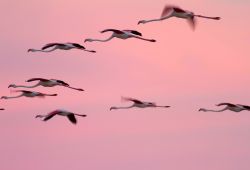
La maison du Guide de Camargue
Jean-Marie takes you to meet the emblematic birds of the Camargue.

Château Beaubois
AOP Costières de Nîmes. 2 interactive tours through the vineyards guided by a WebApp with a tour and tasting.
La Réserve du Petit Rhône
The Petit Rhône nature reserve is a site of approximately 70 hectares, in which you can follow marked walking trails.
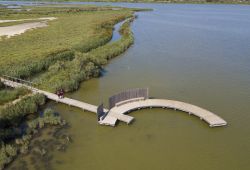
Maison du Grand Site de France de la Camargue Gardoise
The Maison du Grand Site de France de la Camargue Gardoise is a tourist information center dedicated to the landscapes of the Camargue Gardoise.
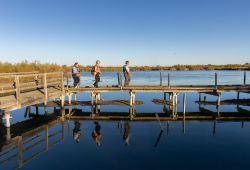
Nature Reserve le centre du Scamandre
The Scamandre Centre will allow you to stroll in the heart of the vast protected areas of the Camargue.
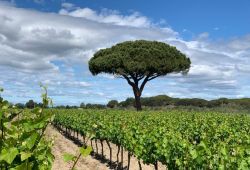
Sur le chemin des sables Suivez Maud
Maud takes you to the heart of the vineyards for an experiential and sensory walk.



